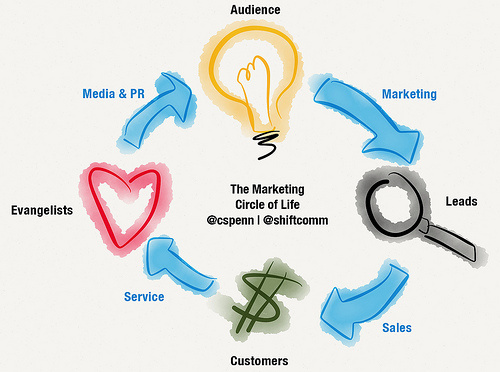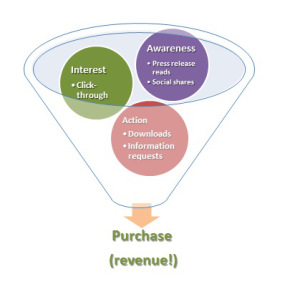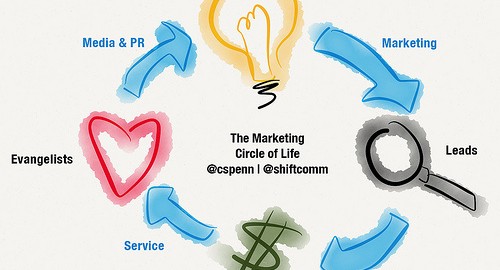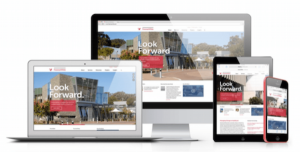
When assessing the ROI of a publicity campaign, it’s standard practice to asses about high-level results, such as the number of reads a message has received and the number of times a message social networks: these metrics are good measures of how well a message resonated with the audience. But PR measurement shouldn’t stop there. In fact, awareness is just the beginning.

Awareness is where interest starts. Interest develops into action. Actions become purchases. And PR is there every step of the way.
In between those two points – awareness and purchase – is the journey your brand’s buyers must take, and the path is not linear. It’s a labyrinth, full of distractions and competing options, but the stream of content deployed in executing a successful PR strategy can nurture audience interest and shepherd potential buyers through the decision process.
To develop more effective and accurate measurement, PR prose need to get closer to the organization’s business engines when assessing campaign results. Did the program shorten the sales cycle, generate better-qualified leads or increase transactions? These are important questions PR should be answering when quantifying campaign outcomes.
To measure the effect of PR campaign has upon the buyer’s journey; one must first identify the key decision points for the potential customer, and then determine PR’s impact at each of those steps.
Key decision points PR can influence & measure
One key touch point is the buyer’s visit to the brand website. From a PR standpoint, there are a number of different opportunities for public relations to convert awareness into valuable referrals to the brand website. The digital content organizations publish – those press releases, articles, blog posts, commentary and response created as part of the PR strategy – in effect create myriad portals to key pages on the company web site that are distributed to relevant audiences across the web.
Earned media mentions are also increasingly measurable. Brand mentions that include a link to the company website or even better, a campaign related page, are important drivers of qualify traffic.
However, other opportunities for PR to deliver – and capture – measurable top-line benefits, including:
- Discussions on a relevant discussion group: A thoughtful and relevant response on a digital forum is a great place to offer a link to more related information, and activity on that link can be measured.
- Social mentions that include a link to a relevant web page.
- Commentary on an influential industry blog: If a post on a key blog invites comment from a brand or one of its representatives, the opportunity may arise to offer a link to related information in the response. The content offered via the link must be highly relevant to the conversation, and should be non-promotional in nature.
Benchmark data before the campaign starts
In all of these cases, tracking traffic to the specific page is important to measuring the PR campaign result. Ideally, the PR team will work with the web team prior to the campaign lunch, and benchmark traffic to the pages the campaign is targeting. In addition to benchmarking general traffic numbers, the team should also look at the third-party referring traffic to the target webpages prior to campaign launch.
When the campaign kicks off, the PR team will be able to assess the degree to which they have moved the needle by looking at those two figures: traffic to the specific pages, and new refers to those pages.
URL tracking reveals more than results
Additionally, it can be useful to include trackable URLs in any content it’s published online – including press releases, blog post comments, and references on online forms to the organization website. Plugging URLs you can measure into content will give you more insight into audience preferences, as well as enabling you to track the click-through rate of your content piece.
In the best case scenario, the an organization that uses marketing automation software, such as Marketo, Eloqua or Hubspot, which enables the PR team to create unique URLs that are also tracked within the software, allowing the brand to capture traffic to the website and subsequently track visitor behavior.
Organizations with measurements capabilities such as these in place are then able to compare the quality of website visitors generated by the campaigns, versus visitors arriving at the web site via other channels. Using this data, they can assess whether or not the PR efforts produced more qualified leads or shortened the sales cycles.
Taking the time to assess the brand’s current measurement practices and developing understanding of where PR can influence measurable touch points in the customer journey requires some effort, but it lays the foundation for developing meaningful measurement of PR’s impact on the business.
Business Articles | Business 2 Community
(283)







